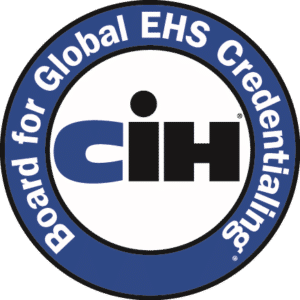
Air Duct Cleaning
Air duct cleaning is essential. Make sure the inside of your ductwork is clean. Many homeowners replace the air handlers but leave the ductwork in place. Over time, dust, dirt, and mold accumulate in the ducts. These contaminants become entrained in the airflow and are distributed into the room air when the unit is on. Disconnect a supply branch from the main supply trunk immediately downstream from the air handler, and evaluate levels of dust, dirt, and mold inside your the trunk. Using a HEPA filter vacuum cleaner, vacuum the interior surfaces of the trunk to reduced levels of dust/dirt, and mold. Take care not to damage any fiberglass duct liner.
Air Duct Cleaning
Part 1 – Special Provisions
1.01 Qualification of the HVAC System Cleaning Contractor
(A) Membership: The HVAC system cleaning contractor shall be a member of the National Air Duct Cleaners Association (NADCA).
(B) Certification: The HVAC system cleaning contractor shall have a minimum of one (1) Air System Cleaning specialist (ASCS) certified by NADCA on a full time basis.
(C) Experience: The HVAC system cleaning contractor shall submit records of experience in the field of HVAC system cleaning as requested by the owner. Bids shall only be considered from firms that are regularly engaged in commercial HVAC system maintenance with the emphasis on commercial HVAC system cleaning and decontamination.
(D) Equipment, Materials and Labor: The HVAC system air duct cleaning contractor shall possess and furnish all necessary equipment, materials and labor to adequately perform the specified services.
1. The Contractor shall assure that its employees have received safety equipment training, medical surveillance programs, individual health protection measures, and manufacturer’s product and material safety data sheets (MSDS) as required for the work by the U.S. Occupational Safety and Health Administration, and as described by this specification.
2. The contractor shall maintain a copy of all current MSDS documentation and safety certifications at the site at all times, as well as comply with all other site documentation requirements of applicable OSHA programs and this specification.
3. Contractor shall submit to the owner all Material Safety Data Sheets (MSDS) for all chemical products proposed to be used in the cleaning process.
(E) Materials
1. Pre-manufactured sheet metal service panels that are cross broke, hemmed, predrilled and gasketed.
2. Pre-manufactured service panels (same as above) with liner.
3. Pre-manufactured access door with locking seal.
4. Caulk: Use a silicone based product specifically rated for sealing ductwork.
5. Chemicals for cleaning coils, dampers and fans.
6. Chemicals for biocide/sanitizing treatments.
7. Repair coating designed specifically for mechanical insulation. This repair coating shall not affect thermal or acoustical properties of the insulation, must meet NFPA Std. 90A and 90B, must meet State of Washington’s TVOC requirements, must have anti-microbial agent that meets the microbiological testing standards of UL181, ASTM C1071, ASTM G21, ASTM G22.
8. IMCOA-an expanded, closed cell, polyolefin type liner used to replace damaged mechanical insulation in Air-handling units, Rooftop units and other areas.
(F) Licensing: The HVAC system cleaning contractor shall provide proof of maintaining the proper license(s), if any, as required to do work in this state and/or cities. Contractor shall comply will all Federal, state and local rules, regulations, and licensing requirements.
1.02 Standards
(A)NADCA Standards: The HVAC system cleaning contractor shall perform the services specified here in accordance with the current published standards of the National Air Duct Cleaners Association (NADCA).
1. All terms in this specification shall have their meaning defined as stated in the the NADCA Standards.
2. NADCA Standards must be followed with no modifications or deviations being allowed.
1.03 Documents
(A) Mechanical Drawings: The owner shall provide the HVAC system cleaning contractor with one copy of the following documents:
1. Project drawings and specifications.
2. Approved construction revisions pertaining to the HVAC system.
3. Any existing indoor air quality (IAQ) assessments or environmental reports prepared for the facility.
The following current standards and publications of the
issues currently in effect form a part of this specification to the extent indicated by any reference thereto:
(A) National Air Duct Cleaners Association (NADCA): “ACR-2005, Assessment, Cleaning &
Restoration of HVAC Systems,” 2001.
(B) National Air Duct Cleaners Association (NADCA): “Understanding Microbial
Contamination in HVAC Systems,” 1996.
(C) National Air Duct Cleaners Association (NADCA): “Introduction to HVAC System
Cleaning Services,” 2002.
(D) National Air Duct Cleaners Association (NADCA): Standard 05 “Requirements for the
Installation of Service Openings in HVAC Systems,” 1997.
(E) Underwriters’ Laboratories (UL): UL Standard 181.
(F) American Society of Heating, Refrigeration and Air Conditioning Engineers (ASHRAE):
Standard 62-89, “Ventilation for Acceptable Indoor Air Quality”.
(G) Environmental Protection Agency (EPA): “Building Air Quality,” December 1991.
(H) Sheet Metal and Air Conditioning Contractors’ National Association (SMACNA):
“HVAC Duct Construction Standards – Metal and Flexible,” 1985.
(I) North American Insulation Manufacturers Association (NAIMA): “Cleaning Fibrous
Glass Insulated Air Duct Systems,” 1993.
Call Angstrom testing Services at 516-724-4574 if you have questions.
About Angstrom Testing Services

